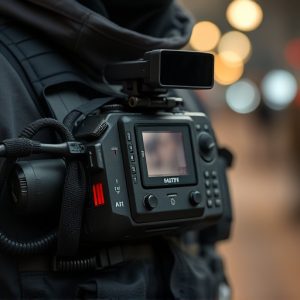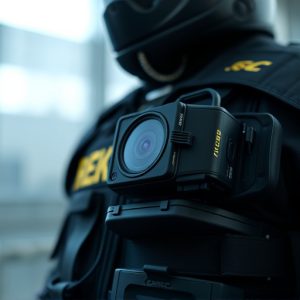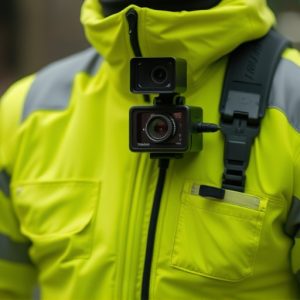Body-Worn Hidden Cameras: A Security Solution with Legal and Ethical Boundaries
Body-worn hidden cameras are increasingly used in both professional law enforcement and personal se…….
Body-worn hidden cameras are increasingly used in both professional law enforcement and personal security for their ability to capture high-quality, first-person perspective evidence or enhance situational awareness. When selecting one, considerations such as resolution, battery life, storage capacity, and field of view are crucial to ensure the footage is clear and detailed. These devices must be used within legal frameworks that respect privacy laws like GDPR and CCPA. Proper maintenance and understanding of their operational limits are essential for their effectiveness in critical situations. Body-worn hidden cameras not only serve as a deterrent against misconduct but also play a vital role in providing detailed visual records, which can be used as evidence and to improve security strategies through advanced analytics. Their deployment raises important legal and ethical issues that require clear policies on acceptable use, data handling, and access controls to prevent misuse. Ethically, their application must be justified, transparent, and respect individual privacy to maintain public trust, ensuring accountability and a balance between safety and privacy in law enforcement interactions with communities.
Body-worn hidden cameras have emerged as a pivotal tool in modern security strategies, offering a nuanced perspective on public and private safety. This article delves into their functionality, integration, and impact within various security frameworks. We will explore the transformative role these devices play in deterring crime, supporting law enforcement, and providing accountability. Moreover, we’ll navigate through the legal and ethical landscapes governing their use to ensure privacy is upheld while maximizing their effectiveness. Join us as we unravel the complexities of body-worn hidden cameras in enhancing security operations.
Understanding Body Worn Hidden Cameras: A Comprehensive Guide
Body-worn hidden cameras have become increasingly prevalent in both law enforcement and personal security scenarios, offering a unique perspective on events as they unfold. These compact devices are designed to be discreet yet effective, capturing footage from a first-person vantage point that can provide critical evidence or enhance situational awareness. Understanding the capabilities, legal implications, and best practices for deploying body-worn hidden cameras is crucial for users seeking to harness their benefits responsibly.
When selecting a body-worn hidden camera, it’s essential to consider factors such as resolution, battery life, storage capacity, and field of view. High-definition recording ensures that the footage obtained is clear and detailed, which can be pivotal in various applications from professional security to personal safety. Additionally, the device should have sufficient battery life to operate for extended periods without the need for frequent recharging. Storage options such as SD cards or cloud storage must be reliable and secure, safeguarding the data against loss or tampering. Users should also be aware of privacy laws and regulations that govern the use of body-worn cameras in public and private spaces to avoid any legal pitfalls. Proper maintenance and understanding the operational limits are key to ensuring these devices function as intended when they are most needed.
The Role of Body Worn Hidden Cameras in Enhancing Security Operations
Body-worn cameras equipped with hidden functionalities have become an indispensable tool for security personnel across various sectors, including law enforcement, private security, and even personal safety applications. These devices are designed to discreetly record interactions, providing a clear visual account of events as they unfold. The role of these body-worn hidden cameras in enhancing security operations is multifaceted. For one, they serve as a deterrent against misconduct by both the security personnel and civilians, as actions are recorded regardless of whether the camera’s presence is overtly acknowledged. This accountability measure fosters a culture of transparency and professionalism within the security forces.
Furthermore, body-worn hidden cameras offer valuable evidence in the event of an incident. The high-quality footage they capture can be used to clarify situations that may lead to legal action or complaints against officers. The recordings assist in objective investigations, thereby upholding justice and maintaining public trust. Additionally, these devices can be instrumental in collecting data on crowd behavior or specific threat patterns, contributing to the development of more effective security strategies. The integration of artificial intelligence and advanced analytics with body-worn hidden cameras further enhances their capabilities, enabling real-time monitoring, alertness to unusual activities, and swift intervention when necessary. This technological advancement not only bolsters the safety of both the public and the security personnel but also supports continuous improvement in operational protocols through the insights gathered from the collected data.
Evaluating Legal and Ethical Considerations of Body Worn Hidden Camera Use
When considering the deployment of body worn hidden cameras within security frameworks, it is imperative to scrutinize both legal and ethical implications. Legally, the use of such devices must align with privacy laws and regulations that govern surveillance activities. These cameras can capture sensitive information, so regulations like the General Data Protection Regulation (GDPR) in Europe or the California Consumer Privacy Act (CCPA) in the United States dictate strict conditions for their operation to protect individuals’ rights. The deployment of body worn hidden cameras must be justified and regulated by clear policies that define acceptable use cases, data storage protocols, and access controls to prevent misuse or unauthorized access.
Ethically, the use of body worn hidden cameras raises questions about consent and transparency. It is crucial to ensure that individuals are fully aware of when and how these devices are being used. This awareness is vital to maintain public trust in security measures. Additionally, ethical considerations dictate that such cameras should only be employed under circumstances where they serve a legitimate purpose, contribute to the safety and well-being of both the public and officers, and do not infringe upon individuals’ expectations of privacy. The ethical framework for their use must be grounded in accountability, with clear guidelines that govern how footage is handled and who has authority to review it. This approach ensures that the benefits of enhanced security are balanced with respect for individual rights and fosters a transparent relationship between law enforcement and the communities they serve.


